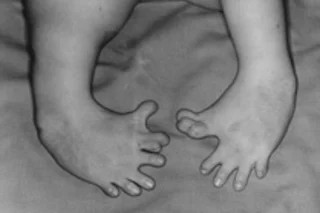Researchers may have finally figured out the mechanism of the tragic birth defects caused by thalidomide, the drug taken by pregnant women in the late 1950s as a remedy for nausea: It is thought to have inhibited development of new blood vessels at a crucial stage in the pregnancy.
Women usually took the drug at about five to nine weeks into their pregnancy to combat morning sickness, a specific window that lead researcher Neil Vargesson says “is crucial as that is when the limbs of babies are still forming ... The blood vessels involved in this process, at this stage of pregnancy, are still at an immature stage when they rapidly change and expand to accommodate the outgrowing limb” [BBC]. The most common birth defects caused by thalidomide were babies born with stunted or malformed limbs.
The drug has been difficult to study until now because the compound has to ...














